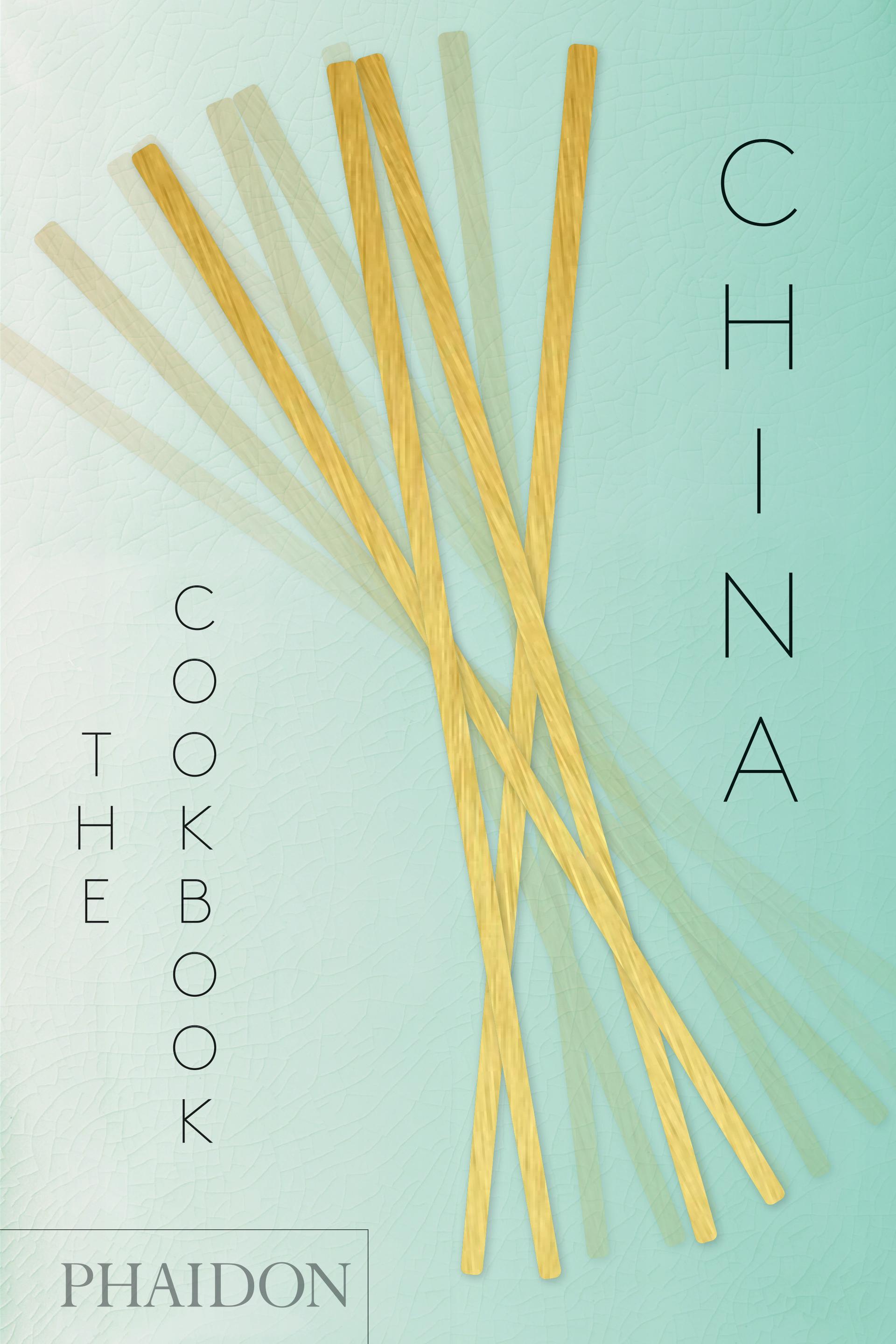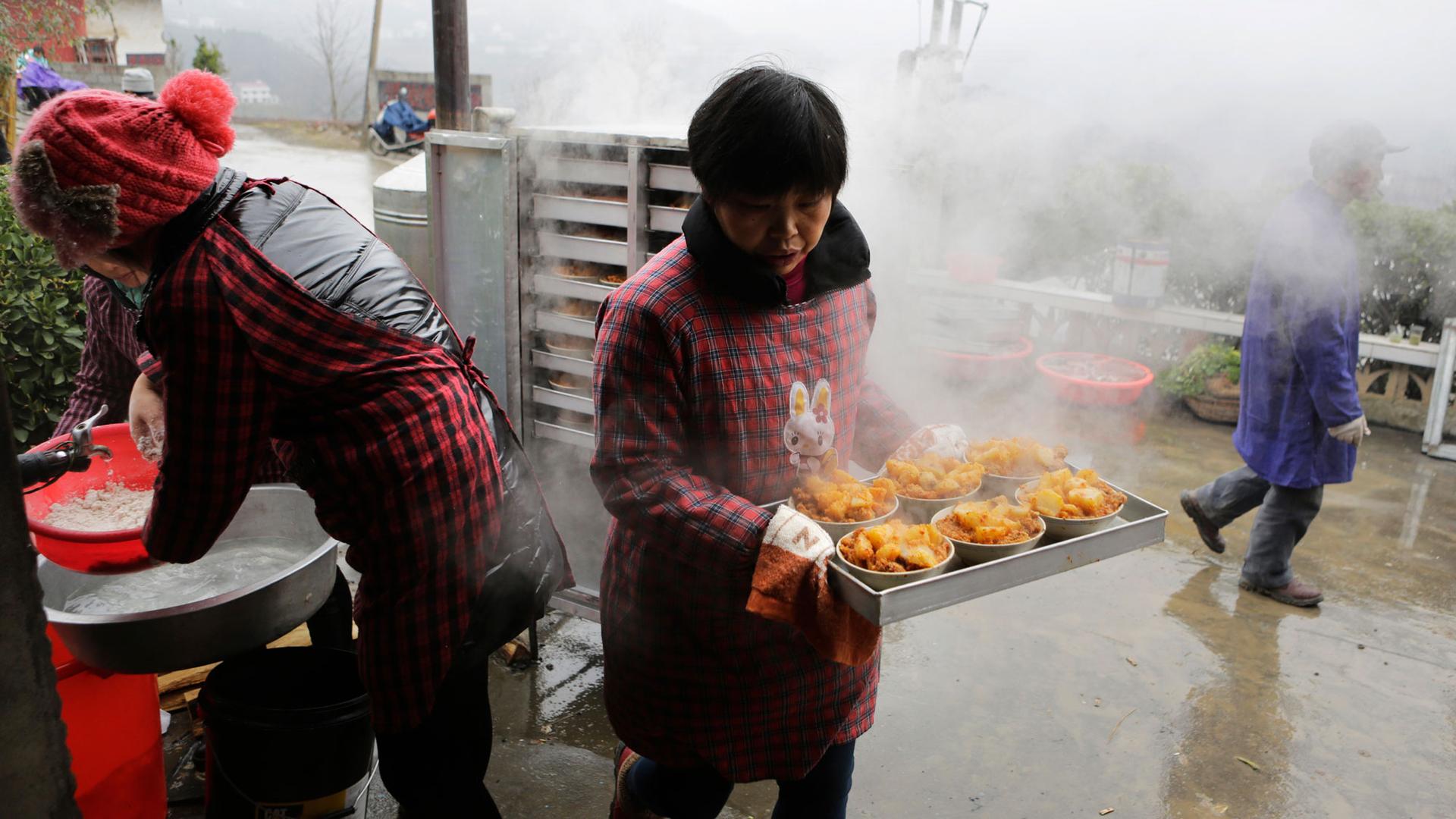A local cook prepares a traditional ethnic Tujia wedding feast during celebrations marking the Lunar New Year in China’s Hubei province.
If there’s a subject Kei Lum Chan knows, it’s the cuisines of China.
“I knew pretty much most of the regions. We have traveled all over [the country] so there were no surprises for us.”
Kei Lum Chan and Diora Fong Chan are the co-authors of a new book that attempts a somewhat comprehensive approach to Chinese food. The two married writers have the pedigree: Kei Lum’s father authored a 10-volume classic of Chinese cooking, published in 1953 in Hong Kong. Diora’s family heritage includes membership of the Qing Dynasty court, where fine cooking became part of her family’s own traditions.
For their latest book together, titled "China: The Cookbook," they found some parts of China more interesting than others, says Kei Lum.
The fat-tailed sheep

Picture the scene: A big glob of fat sitting on top of a boiled lamb. Kei Lum continues:
“The host would take the knife, cut out a strip of this fat, put it on his palm and serve it to the guest of honor — which on that particular day was me. I had to receive that piece of fat — I'd say it was about four inches long and an inch wide — I had to receive it on the palm of my hand, and sort of suck it in in one breath.”
Kei Lum says he was obliged to consume the length of fat because he was the guest of honor. And everybody that followed him had to do the same thing until all had been served.
“Now, my friend next to me did have some trouble doing that — probably more psychological than anything else, because it went down halfway! So it took him an additional try. It was very funny.”
That was one of the experiences Kei Lum and Diora Fong had as they traveled China, experiencing different foods and different cultures.
Regions and sub-regions
“China is not just Sichuanese or Cantonese food," Kei Lum says. "We've got 30-plus regions and if you count sub-regions it's even more. China is really diversity itself. Wherever you go you find different food. We are the beneficiaries of thousands of years of development. And we are very fortunate to have such a rich heritage to write from.”
Kei Lum says the thing to remember, no matter the regional differences, is that Chinese food is about sharing.
“We hate to eat alone,” he says, “the Chinese don't like it. No matter where you go in China, all the food is shared. If you go to Mongolia, they share a lamb. If you go to Canton, they share a dish of vegetables. Everything is shared. It is hard to cook for one in Chinese cooking; you just don't do a portion of one — you share amongst family, friends.”
Food in China, says Kei Lum, "contributes to harmony." It offers not only the pleasure of eating, but also the pleasure of company.
>>>>
Recipe:
YANGZHOU FRIED RICE
Adapted from CHINA: THE COOKBOOK by Kei Lum and Diora Fong Chan (Phaidon, September 2016)
Region: Jiangsu
Preparation time: 10 Minutes, Plus 1 Hour soaking time
Cooking Time: 1 Hour
Serves: 2-3
INGREDIENTS
- 1 1/4 cups (9 oz/ 250 g) long-grain rice, rinsed and drained (see note)
- 2 1/2 tablespoons vegetable oil
- 3 1/2 oz/ 100 g uncooked shrimp (prawns), shelled and deveined
- 4 eggs, separated
- 1 teaspoon salt
- 1/2 quantity barbecue pork
- 1 scallion (spring onion), chopped
INSTRUCTIONS
This dish dates back to the late sixth century when it was created by Yang Shu, a top government official during Emperor Yang’s reign in the Sui Dynasty. The dish was originally called “Golden Nugget Rice” because each rice grain was enveloped in golden egg yolk.
Combine the rice, 1/2 tablespoon oil, and 2 cups (16 fl oz/ 475 ml) water in a saucepan and stir once. Bring to a boil, then reduce to low heat, and cook, covered, for about 15–20 minutes, or until the rice is tender. (Alternatively, use a rice cooker.)
Bring a saucepan of water to a boil over high heat, add the shrimp (prawns), and blanch for 2 minutes. Drain and set aside.
Combine 2 egg whites, 4 egg yolks, and 1/2 teaspoon salt in a small bowl and beat together.
Slowly pour the eggs into the rice and, using chopsticks, stir until each grain of rice is coated in egg.
Heat the remaining 2 tablespoons oil in a wok or large skillet (frying pan) over medium-high heat, add the rice, and stir-fry until each grain of rice is covered with oil. Turn off the heat and stir-fry for another 2 minutes until the eggs are cooked. Add the shrimp, barbecue pork, and 1/2 teaspoon salt, and toss for another 2–3 minutes. Stir in the chopped scallion (spring onion) and transfer to a serving bowl or plate and serve.
NOTE:
Alternatively, 3 cups (1 lb 2 oz/ 500 g) of day-old rice can be used. Rinse the rice with water to wash away the starch and to break up any lumps, then drain. Skip step 1 of the recipe.
Every day, reporters and producers at The World are hard at work bringing you human-centered news from across the globe. But we can’t do it without you. We need your support to ensure we can continue this work for another year.
Make a gift today, and you’ll help us unlock a matching gift of $67,000!
